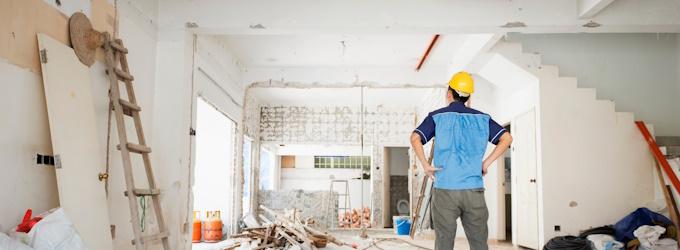Air Purification Is Key to Breathing Cleaner Air at Home
Household construction projects produce particulate matter that gets into the air your family breathes. Projects involving drywall, wood trim, batt insulation, and even interior paints can result in poor indoor air quality, either for a short time or for the duration of off-gassing of VOCs (volatile organic compounds) in construction supplies.
You can take steps to improve indoor air quality immediately following home renovation or remodeling projects, one of which is choosing from the best air purification systems on the market. Others include cleaning, containing the mess, and maintaining your forced-air HVAC system. Keep reading for guidance on how to prepare your own indoor air quality action plan.
Why Is Restoring Indoor Air Quality So Important?
Breathing clean air is vital for your overall health. Clean indoor air can improve cognition and reduce asthma and allergy triggers in the air. Put simply, indoor air quality improves your quality of life.
Construction materials often put VOC (volatile organic compound) vapors into the air. Exposure to VOCs can irritate your eyes, nose, and throat and cause headaches. Some are proven carcinogens. Air purification reduces your risk of these symptoms. Keep reading to learn more about VOCs.
Before: Contain the Mess
During the home remodeling process, you may have a number of contractors coming into and out of your house. This is especially true when you’re upgrading important rooms, like the kitchen or bathroom.
You can help prevent air contamination by requesting contractors observe worksite containment best practices. If you’re doing a DIY renovation, it’s advised you follow these, too.
Plastic barriers that block off doorways are a great way to isolate construction dust to the worksite. You can buy these from your local hardware store. In a pinch, a tarp can also work.
Ask your contractors to use shoe covers should they leave the worksite and enter another part of your home. This reduces the tracking of dust and other debris into clean areas.
Before: Install a Home Air Purification System Before Renovations Begin
Another great way of preventing an indoor air quality issue is to proactively install an air purification system in your home. Store-bought air purifiers can help restore your indoor air quality in smaller spaces, but they won’t tackle every room in your home.
Prevention requires a bit of advanced planning on your part. You’ll need to:
- Contact Meyer Heating & Air to request an estimate on an air purification system. We are authorized dealers of Sanuvox products, industry-leading air scrubbers that use UV light and HEPA filtration to eliminate particulate matter, bacteria, and viruses from the air.
- Choose the right system for your home’s size and existing HVAC system. You should also consider your budget.
- Schedule installation with one of Meyer’s experienced technicians.
Clean Air Tip: If you didn’t pre-install an air purification system, it’s never too late to do it. Your family can benefit from cleaner, fresher air, long after your remodeling projects are done. Request an estimate on a system using our online booking app.
During and After: Ensure Proper Ventilation In Your Home
Certain projects, like painting, applying sealants, or installing flooring with adhesives can release toxic VOC vapors into the air. Inhaling these chemicals may result in your family feeling sick.
Properly ventilate your home during these renovation tasks. You can open doors and windows to let fresh air in.
Keep in mind, however, that opening windows may increase the amount of outdoor pollution you’re breathing. Open windows also allow pollen and other allergens to enter. As you can see, ventilation isn’t the perfect air purification answer.
Clean Air Tip: Request that your contractor uses low-VOC products where possible. Check product labels and search online for recommended paint, sealants, adhesives, carpet, and more.
During and After: Clean Thoroughly and Often
Even the best air purification systems and strategies need a little help. By cleaning your home thoroughly and frequently during and after construction projects, you can reduce particulate matter like dust.
Cleaning, including vacuuming, mopping, and wiping down surfaces, removes these particles from your floors, furniture, and walls. It’s a surefire way to eliminate the chance that debris becomes airborne.
Frequent cleaning can also help reduce or mask the leftover odors from polyurethane, new carpeting, construction glues, and other materials.
Before and After: Change Your Air Filter
If you have a forced-air HVAC system, it’s probably equipped with an air filter. You should change the air filter at least every 90 days (and more often if you have kids and pets). But before and after construction projects are also ideal times to swap your filter for a clean one.
Why before? Because a fresh filter can better trap particles instead of allowing them to recirculate into your home through your air ducts.
Why after? Because your filter has completed its lifecycle and is likely dirty and full from all the particles it trapped during your renovation.
Home Air Purification Doesn’t Have to Be Hard
If reading most of these tips for improving indoor air quality after renovations has left you worried or overwhelmed, your best bet is to choose a reliable way to restore your home’s indoor air quality: a professional air purification system.
Although you can rent portable systems for the duration of your project, you can responsibly continue to ensure your family breathes clean air by installing a Sanuvox system with help from Meyer Heating & Air.


